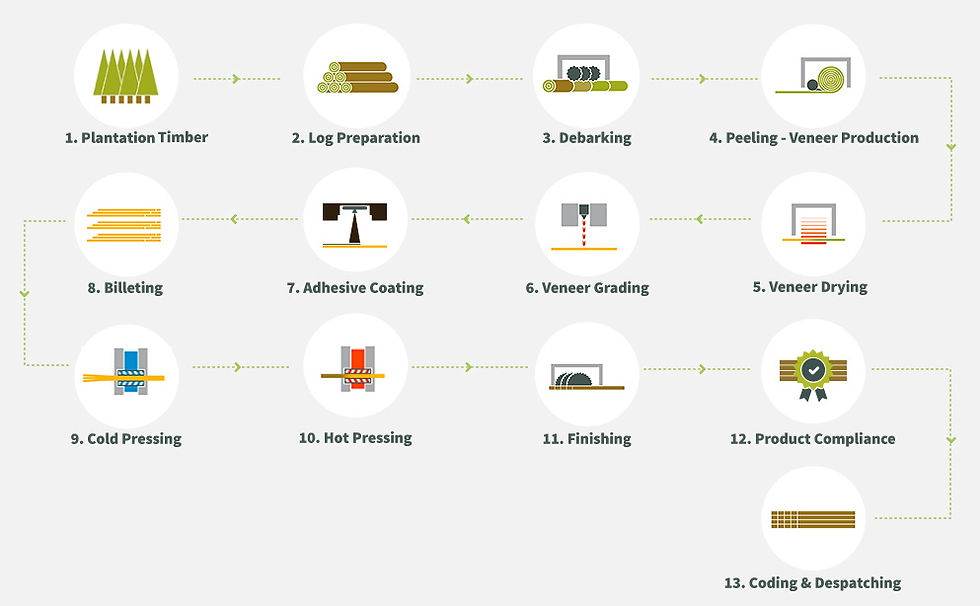
Tel:+86(1)8005395511
寰球胶合板(临沂)有限公司
A Plywood Alliance Member

Daniel Williams from USA Office of Global Plywood Co.,Ltd
2021年8月22日
Production process of plywood in a typical plywood factory.
This article explains to you the typical production process in a Chinese plywood factory. We write every process with important details.
1. Veneer Cutting
Softwood or hardwood veneers are cut from clean logs.
The cutting methods can be quater cut or rotary cut. This process produce different grades of veneers for plywood production.
Veneers are selected and graded for use in different products.
2. Veneer Drying
The moisture content in the veneer is critical for bond strength of a plywood panel.
3. Glue Spreading
Glue are spreaded on the veneer evenly with a glue spreader. The thinner the better.
Both faces of the veneer are glued with adhesive after the veneer go through the glue spreader.
plywood glue spreader
How Glue Are Spreaded on Dry Veneer
Most plywood factories in China use the glue spreader to make the veneer glued.
For more details please see glue types.
4. Billeting
billeting plywood core
Billeting is a professional term in plywood production. It a system method to lay up the veneers based on plywood structure, thickness and layer numbers.
The layers numbers must be carefully calculated based on the veneer types and plywood quality requirement.
Different veneer has different compress ratio. A marine plywood requires higher compress ratio compared with ordinary plywood.
Plywood Types Compress Ratio
Ordinary Plywood 5-15%
Formwork Plywood 8-10%
Aircraft Plywood 20-25%
Marine Plywood 30-35%
Laminate Veneer Lumber 50%
Usually high grades veneers are used for surfaces. Lower grade veneers can be used as plywood core as long as it doesn’t affect the plywood surface.
5. Ageing
The billeted veneers are stacked for 15minutes before cold press. This process is called aging.
Aging can help reduce the moisture in the glue so as to increase the bonding strength. The ageing time should be controlled carefully. Ageing time should not be too short or too long.
6. Cold Press (Pre-Press)
Cold press is the first step to make the veneers into a flat board.
The stack are usually 1meter high. Pressure 0.8-1.0 MPa. Pre-press time 15-20 minutes.
The cold press requires a high adhesive capacity for the glue. There are different ways to increase adhesive capacity.
Add soybean powder or flour in the glue
Add PVC in the UF glue
The plywood sheet are repaired after the cold press in order to maintain better
7. Hot Press
Liquid glue has no bonding strength. The glue must be cured in order to get bond strength.
The curing requires pressure and high temprature.
Key points of hot press:
Pressure: Proper pressure can squeeze the air out and make the glue even absorbed.
Heat: The heat will melt and cure the glue.
Time
This process is considered 1st time hot press of 2 times press. Not every plywood will go through this process.
The ply board are calibrated after the hot press.
8. Surface Laminating
This is the second time hot press of 2 times hot press. Even though its time and pressure is less than the 1st hot press.
The surface lamination can be hardwood veneer, softwood veneer, melamine paper, phenolic overlay film, HPL, etc.
9. Finishing
This include cutting, sanding and packaging of the plywood. Also, the quality checking of the product is done in the finishing part.





